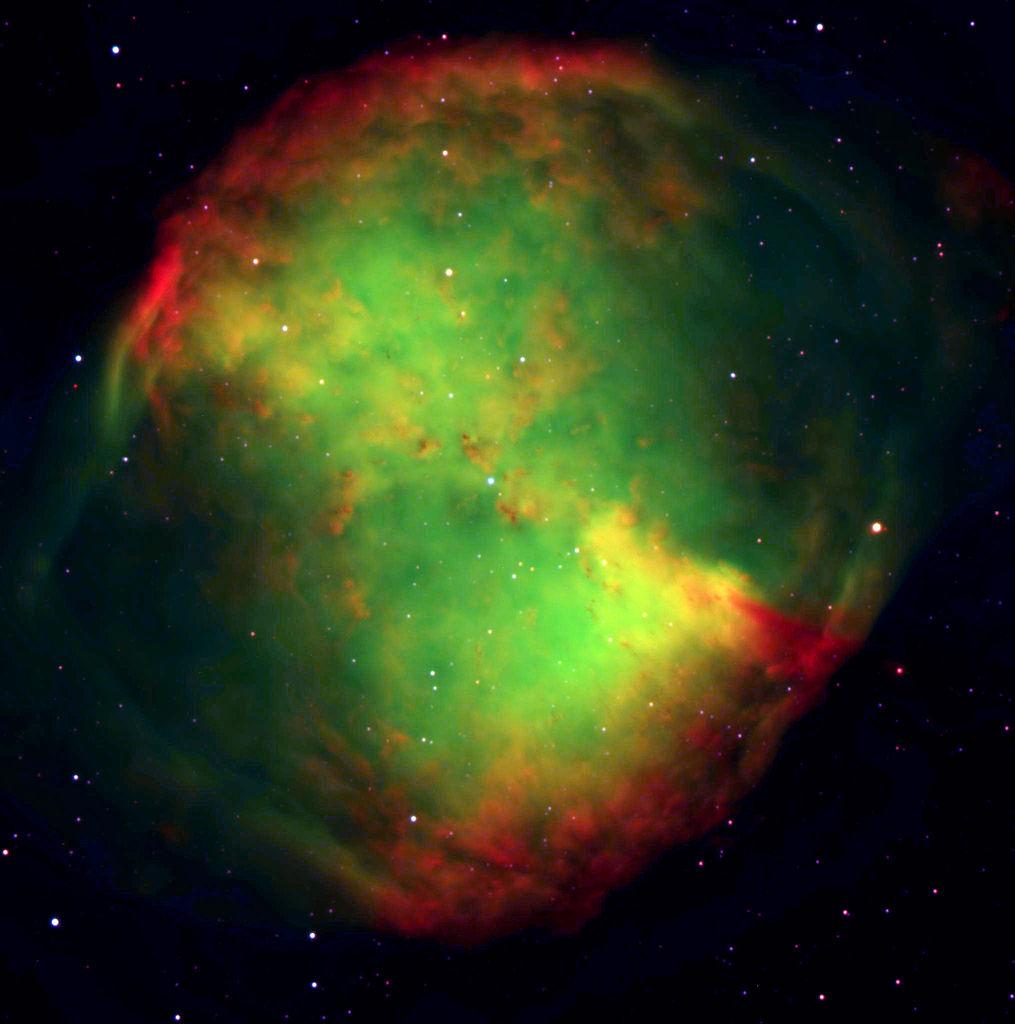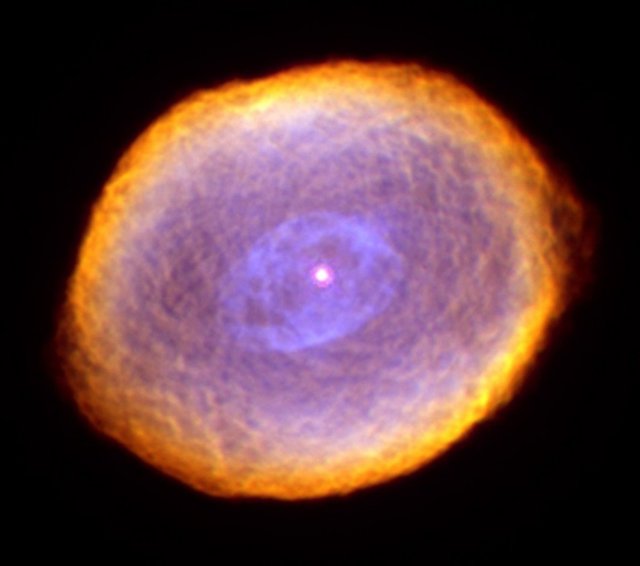Planetary Nebulae and White Dwarfs
Nebulae are stunning aren't they?
Somehow these nearly empty consistency behemoths yield some of the most vibrant patterns and colors imaginable, on top of that, they're a great source for learning about stellar life cycles. They quite literally represent the births and deaths of stars.
But there's something important to know about them, not only do they come in different shapes and sizes, but in different categories.
This is a bit tough though, as there are different ways to classify them. The most common way is by their origin type, as in what created them and what they will provide. This can be placed into 3 groups; Stellar Nursery, Planetary Nebulae, and Supernova remnants.
The first is the most significant, as it's name suggest, they are the birth-places of stars, we can look into them and see proto stars, baby stars, forming slowly as gas accumulates. Like a stellar Hysterscopy, we can look past the wall of dust and see a star waiting to initiate fusion. As for supernova remnants, their name says all you need to know about how they form.
But I'm not interested in either of these for the time being. Right now I want to focus on the given topic, planetary nebulae, the end game for our own sun.
These captivating space bubbles are comprised entirely of the stuff of stars. They are the ghost of a former sun like star in the low mass tier. And as you can see, they're quite beautiful.
In my last article I wrote about these types of stars and how they die, the process is a bit lengthy, but the ultimate result is that the star blows off every ounce of its outer layers. As they fly off into space, they don't have time to get very far before the remaining core, a white dwarf, is exposed. And when that happens the nebula lights up from radiation and shows off its brilliant emission colors.
The colors come from the contents, these nebulae are called "Emission" nebulae because the way they project light is through atoms absorbing the energy from the main light source and then expelling it out. Different chemicals shine with different spectra, (Colors), because of different rates of energy release. Since these nebulae are composed almost entirely of Hydrogen and Helium, their colors can have some consistency. However the content can also include oxygen if the star is massive enough, and when this happens, a sharper green becomes visible. Otherwise, the main colors consist of Red, for Hydrogen, and Blue, for helium.
It's worth noting that these clouds do not stay as they are forever, remember the gas is still expanding, and as it does less gaseous interaction occurs and more distance is put between the cloud and the white dwarf that powers it. As result, they are not eternal, they stand visible for a matter of 10,000 years on average, absolutely nothing by comparison to how long the star itself had been around.
After the contents of the nebula have vanished from visibility, all that remains is the condensed core, a White Dwarf, also sometimes called a degenerate star. No not as an insult, but in reference to the fact that the only thing stopping it from collapsing even further and getting even denser is a force called electron degeneracy. Which stops atom from ever directly touching each other.
This hot glowing ball of mostly Carbon and Oxygen has it's atoms lined right next to each other. Contrast to normal matter in which atoms have huge gaps in between their borders. This renders the White Dwarf one of the densest things in the universe. Just one cubic centimeter averages at around one metric Ton, 2200 pounds. They represent nearly 2/3 the mass of the sun condensed into a ball no bigger than the earth.
However it's worth noting that white dwarfs don't actively do anything, as in there is no nuclear fusion happening in their cores like a living star, nothing providing heat, but simply leftover energy from the death throws of the star and force from it's compression. But the compression creates a lot of heat, and white dwarfs are so dense that being heated to those kinds of temperatures means quite an amount of energy. It remains fairly unknown, but some suspect they could stay shining for 100 Billion years.
After that they'd become the theoretical object called a black dwarf, a cool ball, completely invisible but still with immense gravity and density. And from there, they sit silent, forever.
Well, maybe not.
As we've observed on a few occasions before there is a way that they can be re-ignited. For a moment that is, following that they, don't really exist anymore. They've been blown into a trillion tiny pieces flying away from the site at rapid speeds. Because the White Dwarf just got turned into a fusion bomb.
All you need is mass, of any kind. Adding it to a White Dwarf could eventually add up. The main known way that this happens is when binary or multi-star systems contain a star that dies leaving behind a White Dwarf. Under the right conditions with the White Dwarf in close proximity to a partner star, it will slowly eat the other star. Peeling mass off the side by unbelievable amounts. Eventually, this mass can add up to the breaking point, 1.4 Solar Masses. In an Earth sized ball, 1.4 times the mass of the sun. At this point, the inward pressure of gravity is overbearing for the force of electron degeneracy. It fails to hold the atoms apart.
So what happens?
Rather than further collapsing into a neutron star, the Dwarf initiates fusion back into its core. As in the Oxygen and Carbon begins to fuse again, setting off a chain reaction.
This reaction is destructive beyond belief, in a matter of milliseconds, the outward force of energy being released without the ability to channel energy like a star, the energy rips the Dwarf apart in the form of a type 1a Supernova. A blast on par with the energy released in a typical supernova.
They don't happen all that often, given how precise the conditions must be in order for the explosion to occur. But there are plenty of chances, and therefore the universe complies, and allows us to witness this incredible event from a safe distance.
One day our sun will expand, puff, and lose its own outer layers. Become a stunning planetary nebula, perhaps to be viewed by humans from light-years away who left for another star. I myself find it incredible how these cauldrons of fusion perform, efficiently burning elements and creating all that is. And equally incredible that one lies right in our everyday sky, powering the world.
Image Origins:
http://www.messier-objects.com/messier-27-dumbbell-nebula/
http://annesastronomynews.com/photo-gallery-ii/nebulae-clouds/ic-418-the-outer-envelope-has-begun-expanding-outward-leaving-a-hot-remnant-core-destined-to-become-a-white-dwarf-star/
https://en.wikipedia.org/wiki/White_dwarf



Great post, the scale of this stuff is truly incredibly, and it's even crazier that smart people have figured out how to discover information such as you present.
I recently saw a NASA image of the day for Abell 2537 and find it mind boggling that such images are even possible to capture. Looking forward to more of your posts, followed